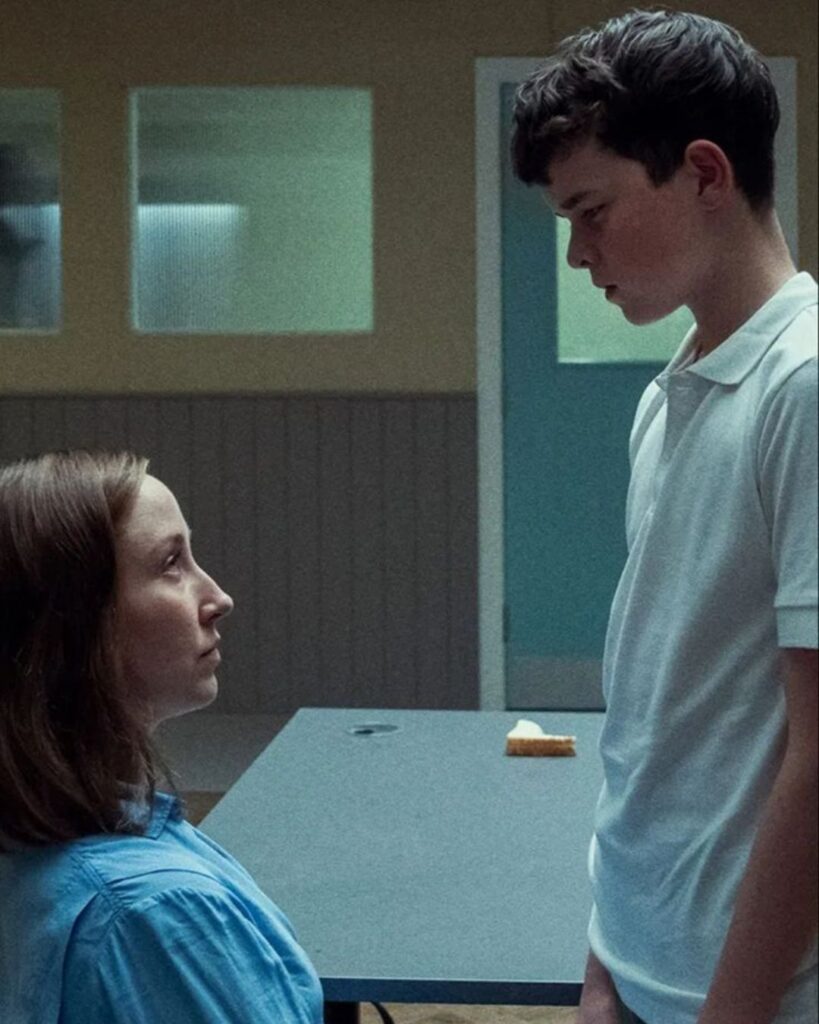Adolescence: The Age of Innocence, the Act of Murder
Imagine for a moment you had to step into Jaime’s shoes. “Who’s Jaime?” you might wonder. After all, you’re comfortable in your own footwear. But pay attention, because Jaime is key to this story. He also had shoes he loved so much that he kept them on, even after he… Well, he killed someone. (Spoiler alert? Maybe.) Anyway, Jaime is just a Adolescent– thirteen, to be exact. (That’s where the series title comes from.) He’s bright and, usually, a good kid who studies hard. He understands the value of knowledge and doesn’t rely on quick AI summaries, showing he’s generally responsible with his time. Until, that is, he isn’t.
History is his favourite subject, especially the Industrial Revolution. Think about it: that era shifted people from quiet villages to cities, from farming to factories, and for many, it meant a step up from poverty. Interestingly, it was also a time (a real first, ditching old stories) when women were actually allowed, even encouraged, to go out and work. Maybe it’s a coincidence, maybe not, but the Industrial Revolution also played a big part in humans realizing they could have more kids without being so worried about having enough food and resources. And just to be clear, this period was also when men and women started having non-romantic friendships, which became super important for understanding the other half of humanity – who, before then, were kind of a mystery with only certain jobs they were expected to do.

So, does Jaime’s interest in the Industrial Revolution stem from its role in empowering women and offering them financial freedom? It’s unclear, as the detectives haven’t explored that angle. Their focus is on the murder of his classmate, a girl he insists he barely knew. However, the police find this hard to believe, given her frequent comments on his social media. They assume she must have been a close friend. If so, what could have driven young Jaime to kill her? The entire police station is reeling from the shock, except for Jaime, his sister, and his parents. They maintain his innocence, convinced the police made a grave error when they raided their home and arrested him.
What was the reason? Why did you do it? You’re Jaime, right? You haven’t worn those shoes that will identify him yet, have you? You can wear them when you’re ready; you still have time. You haven’t been sentenced. The truth about this case is just starting to come out.
Step into the Manosphere, a digital space where individuals, like Jaime (presented here as representing the Incel subculture), can openly discuss their grievances with modern women and the perceived societal marginalization of men. To enter this space, the first steps are to go online and conceal your real identity. Failure to do so leaves you trapped in what they term “Blue Pill reality” – the mainstream perspective, considered an illusion designed to keep those unaware in a subservient state. The key to escaping this? Taking the “Red Pill,” which supposedly grants you the ability to see the world as it truly is, enabling you to chart a course towards the life you believe you deserve.
Note: no one’s allowed to ask why then, despite taking the red pill and by definition living the desired life, they continue to live in this online place instead?
Notwithstanding what the Wachowski sisters, (erstwhile brothers) the creators of the 1999 film ‘The Matrix’ intended by introducing the two-pill concept in the film, since then other coloured pills have joined the market, each insisting on its efficacy and gaining a significant number of patrons.
Wondering what’s this incel stuff and how come someone like promising young Jamie is said to be a part of it? If not, maybe you’ve already taken the truth pill, whatever its colour. If yes, read on.
What does this (��) emoji mean to you? Common sense would dictate that anyone who’s using it in response means they agree with whatever’s being discussed. And why was Katie, the victim, fond of using it as a comment in Jamie’s posts. Again, common sense would say she must have agreed with him. Did she really or was it meant to indicate something profoundly different?
I think it’s important to introduce a new character here. Adam goes to the same school as Jamie and the victim and is a couple years their senior. He is heavily bullied by his classmates, hence looks for reasons to skip classes. He’s also the son of the lead detective on the case and we get the idea why they don’t get along well. This is not the usual strained parent-son relationship dynamic but the generational gap plays a big role. It is Adam who reveals the secrets behind Katie’s comments, to his detective father, who, just like most of us, is oblivious to the meanings of the terms and symbols. As it turns out Katie had been bullying Jamie or was just reinforcing his own beliefs which are discussed during interrogation as well as the psychiatric sessions.
The emoji refers to the 80/20 rule. Not the Pareto principle according to which 80% of the outcomes are a result of 20% of the efforts. The manosphere has adapted the term. It means 80% of the girls are attracted to 20% of the boys. In the context of the series, Katie was reminding Jaime that he doesn’t belong in those 20% of boys, and as a result he’ll remain an involuntary celibate = incel. Jaime took it to mean his life was worthless. The repetition of the same messages, verbal as in the comments and non-verbal in and around school, turned Jamie into a pressure-cooker and so he believed ending the reminder will help depressurize himself. But that was not going to happen.
As for Adam, his value lies not only as a decoder of manosphere terms, his involvement reveals someone who felt compelled to learn this terminology. Typically, only those who have experienced bullying, been bullies themselves, or actively want to prevent future bullying would bother to acquire this knowledge. Given Adam’s past experiences of being bullied and his specific responses during those times, it suggests he learned this language as a protective strategy – either to lessen the impact of future bullying or to completely stop it. This is likely why he’s hesitant to be identified as the one who decoded this secret language for the police.
Logically, one could argue Jamie should have simply disregarded the comments and focused on other people or activities. The world, after all, extends far beyond a classroom or an Instagram account. Ultimately, no one else determines your value, and accepting this isn’t arrogance, it’s simply the truth. However, these arguments often overlook a crucial point: Jamie is an adolescent living in an era where constant internet access is difficult for everyone, including adults. As numerous studies indicate, the prefrontal cortex, the brain region responsible for decision-making and emotional control, doesn’t fully develop until around age 25. Consequently, the same negative message will impact a 13-year-old differently than a 25-year-old. It’s important to remember that the series focuses on teenagers, with the oldest student character being only 17.
This in no way denies the oft-reported incidents where adults are perpetrators of the violent crimes but merely attempts to introduce us to the highly impressionable young age where it all starts and the trigger-happy behaviour spreads through peers and generations.
The series doesn’t focus on the “who did it.” Right from the start, it’s clear who committed the murder. There’s no puzzle to solve; the first episode ends with the underage culprit in custody, handled according to the law, and the case is proceeding through the courts. The atmosphere isn’t dramatic or suspenseful; instead, there’s a constant feeling of sadness. This sadness isn’t just about the typical losses – parents grieving a child, friends missing someone, or the world losing a person. It’s a deeper, more painful loss: the loss of innocence in someone who is the age we usually associate with being innocent.


